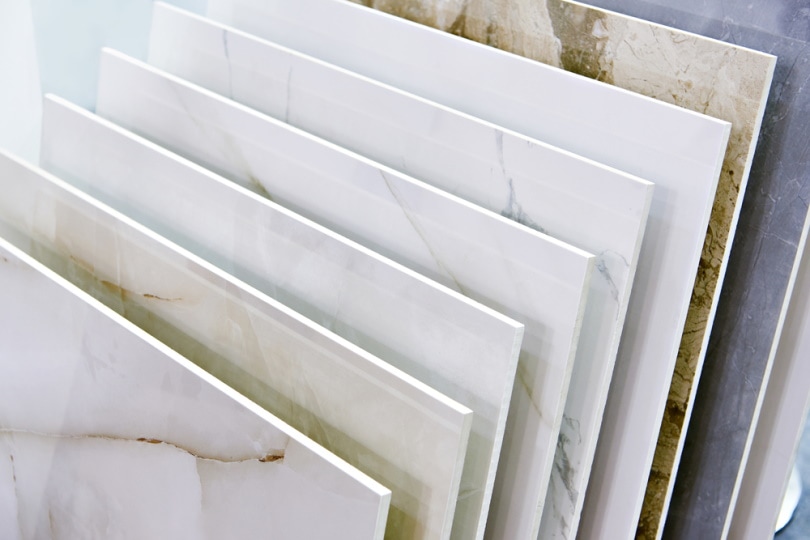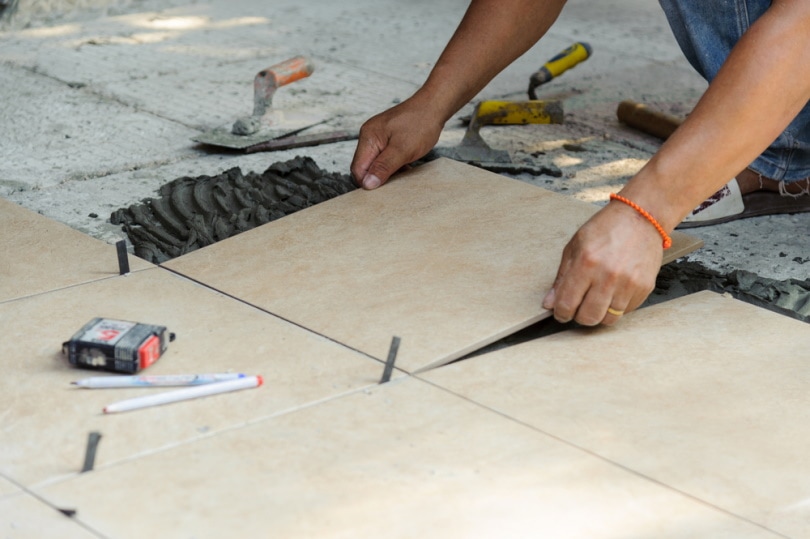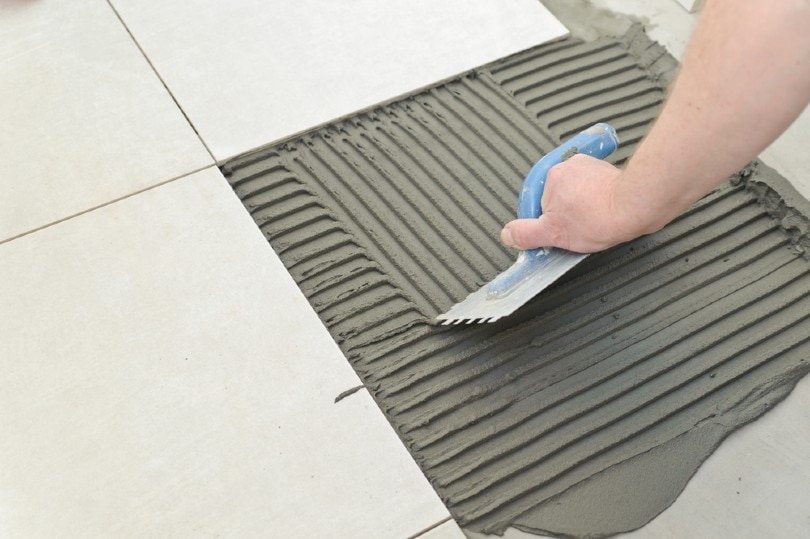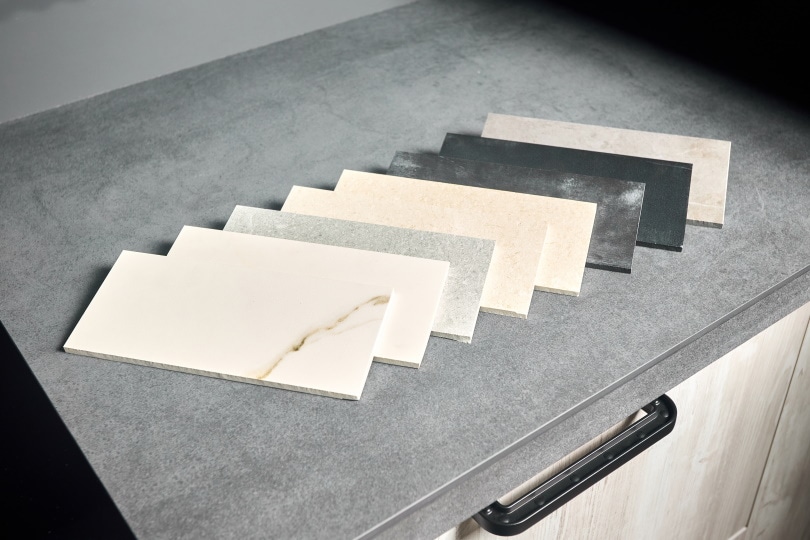Can You Tile Over Tile? Is It a Good Idea?
-
Pete Ortiz
- Last updated:

Outdated tile can put you between a rock and a hard place. As much as a new kitchen backsplash or bathroom floor can revitalize an interior, taking out and reinstalling it can overwhelm the average DIYer. But if you’re lucky, you may be able to tile over the old tile and save tons of time, effort, and money on your project.
Conditions must be ideal for tile over tile to last and maintain its looks. Poor preparation and inspection can lead to a faulty installation or a weak hold that can cause premature wear or, even worse, moisture buildup behind the tile. Make the best choice for your tile update by following this guide on whether adding tile over tile is a good idea.
 Can You Tile Over Tile?
Can You Tile Over Tile?
While many contractors advise against it and often won’t do it when hired, you can sometimes tile over tile and enjoy a durable, beautiful layout that’s as sturdy as a fresh installation. The current setup needs to be in excellent condition to hold the new tile and prevent gaps from opening.
Proper assessment is crucial before trying to tile over tile. You’ll need to inspect the state of the current tile and the backing to ensure both can handle the added weight. While tiling over tile on a floor doesn’t present as many structural issues, you may risk damaging a shower wall or sink backsplash.

When Not to Tile Over Tile
Tiling over tile may not be consequential or particularly challenging in some situations, but there are many instances in which it can be either dangerous or impractical. Every assessment should consider the existing layout’s structural integrity and the functional implications of the added dimensions.
From a safety standpoint, your existing tile needs to be pristine. You can primarily only tile over tile when it’s an aesthetic update. If you need to update your tile because it’s worn and failing, you’ll need to rip it out and start fresh.
The backer for the current tile may not be easy to assess, but identifying if it can handle double the weight it’s currently holding is crucial. Adding more to a weaker substrate like plasterboard may cause it to crack and fall from the frame, thus destroying your wall. Backer boards in showers can often hold up to extra tile, but you’ll need to carefully consider tiling over tile attached to drywall in the kitchen.
Tiling over tile may also not make sense if it causes problems with other fixtures. Adding even a quarter inch in height to a floor may render doors, appliances, or shower drains nonfunctional. Meanwhile, extra depth in a shower wall could make it impossible to reinstall faucets or showerheads.
How to Tell If Tiling Over Tile Is a Good Idea
Tile over tile only when the current tile has a stout hold on the substrate and doesn’t have any cracks, chips, or mildew buildup. They must be spotless and level for the new tile to adhere correctly.
If your tile looks level, clean, moisture-free, and undamaged, give it a tap test with a wooden mallet to ensure there are no hollow or weak points before tiling over it. If less than 5% of the tiles have a poor hold, you can usually remove weak ones, replace them, and still successfully tile over them.
Ensure the tiles are level by placing a box level over them and looking for uneven points. Raised points are the primary concern, but you can smooth minor bumps with a grinder.

How to Tile Over Tile
If you’ve assessed the existing tile installation and substrate and determined it can hold another layer, the process for adhering the new tiles is relatively straightforward.
1. Lay Out Your New Tiles
After fixing loose or damaged tiles, lay out your new ones to measure and cut them to size. Put them back into place over the existing installation to check the layout. Once you’re sure of the fit, remove the tiles and lay out plastic sheets around the area so you can prepare the substrate.

2. Clean the Surface
Use a degreasing detergent to clean the existing tiles of dust, paint, or residue before applying the new tile. Allow it to dry thoroughly. As a substrate, the old tile must be dirt and moisture-free to ensure complete adhesion of the new tile and prevent mold growth.
3. Prime the Surface
Smooth tile offers a terrible grip for new adhesive, and you’ll need to rough the surface a bit. A specialty multipurpose primer like ECO Prim Grip is perfect. Mix it well, and roll it on with a cheap throwaway roller to give the new adhesive layer a firm, gritty surface to grab. Alternatively, you can rough up the glossy surface of the existing tiles with coarse-grit sandpaper on an orbital sander.

4. Apply the New Tile
Once the primer is dry, you can apply the tile as you normally would, using a thinset layer and adding pieces section by section with tile spacers. Finish off with an appropriate grout and sealant.
Final Thoughts
Knowing that it’s okay to tile over tile is a massive relief. You could save hundreds of dollars and several hours on your next project by avoiding the arduous task of removing the tile and preparing the substrate. It’s crucial to ensure your wall can handle it, or you may have an even more expensive repair job to manage. By following these tips, you’ll guarantee a successful update in the fewest steps possible.
Featured Image Credit: Sergey Ryzhov, Shutterstock
Contents

 Can You Tile Over Tile?
Can You Tile Over Tile?